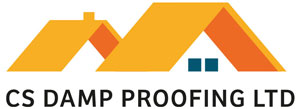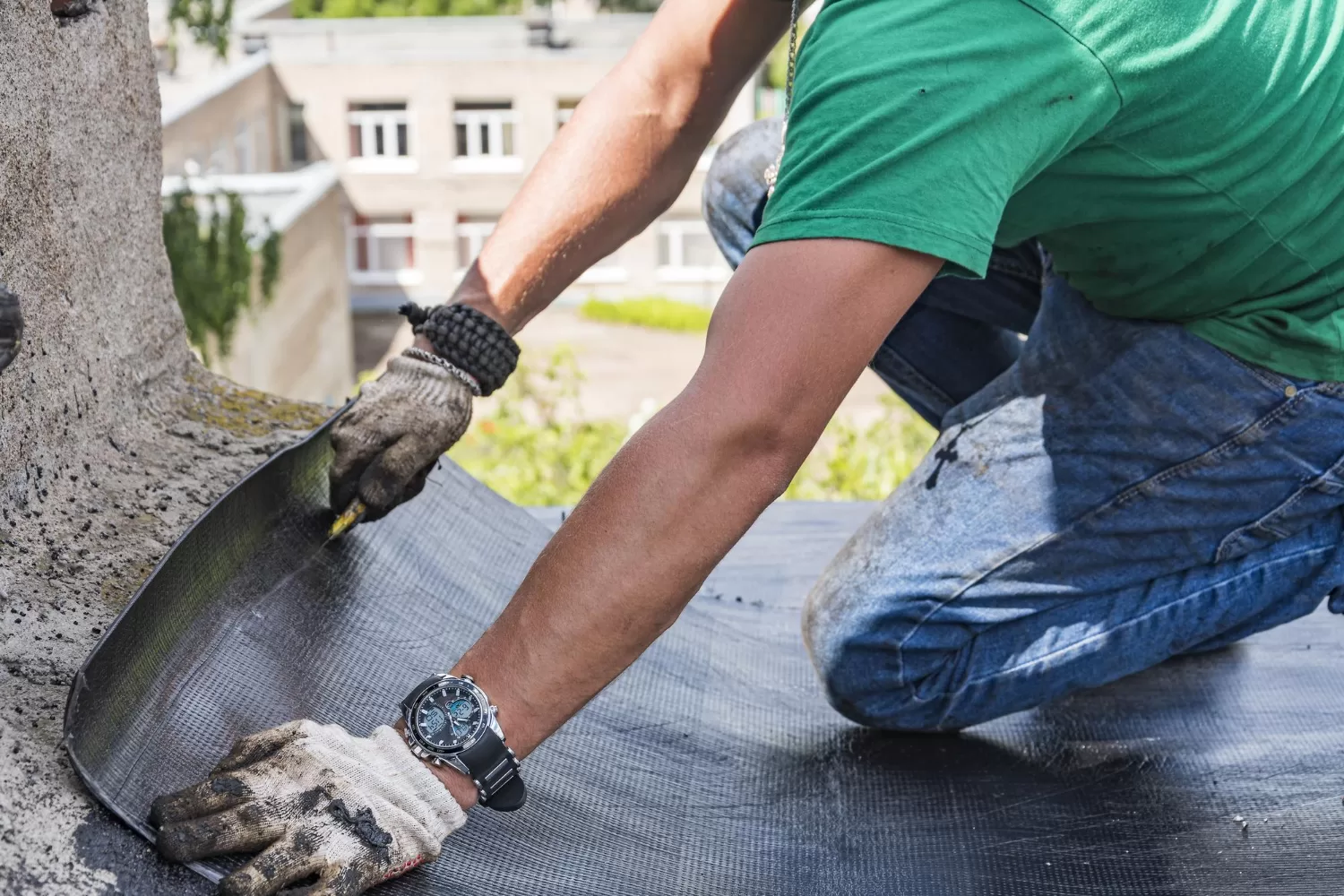Moisture damage to your home can be catastrophic. Whether you’ve only heard stories or it has actually happened to you in the past, you know how quickly dampness can turn a dream home into a mouldy nightmare.
Luckily it isn’t too difficult to protect your property against moisture-related issues with a proper damp-proof course. This simple fix can provide an indispensable safeguard keeping your house structurally sound, mould free and saving you thousands on cleaning and repair costs that come as a result of excessive dampness in living spaces.
In this guide, we’ll explore what is a damp-proof course, the types of damp-proof course, the materials used, its selection, and more. Whether you’re a homeowner or involved in construction, understanding DPC is crucial to the longevity of both your family and your home.
What Is a Damp-Proof Course (DPC)?
A damp-proof course acts as a barrier to prevent moisture from the ground seeping up the walls and causing harm to your property.
In modern construction, DPC is typically applied at basement levels to combat rising damp. It’s used to safeguard your property against various forms of dampness and serves as a barrier that restricts the infiltration of moisture through walls and floors, which could potentially damage any items, or appliances you store in the affected areas.
Moisture can negatively impact plaster, decor, and may even lead to issues like wet or dry rot affecting unprotected timber structures.
Most properties constructed today are equipped with a damp-proof course. The DPC generally takes the form of a mortar course with a bitumen or plastic DPC sheet protruding through it. While generally effective, these materials can deteriorate over time due to factors like building movement or ageing bitumen.
So it is necessary for homeowners to get their damp-proof course checked and replaced after a period of time.
What Causes Damp Walls?
Damp walls aren’t caused only by water rising from the ground. Often, damp problems can originate from the following issues, such as damaged roof coverings or malfunctioning rainwater gutters and downpipes. Leaks in the roof can allow rainwater to infiltrate your walls, leading to dampness and potential structural damage. Damp issues can result from various factors, including:
- Defective roof coverings or rainwater gutters and downpipes.
- Faulty external render or masonry.
- Condensation problems.
- Inadequate window and door pointing.
- Plumbing leaks.
- Defective drains.
- External flooding.
The best way to accurately pinpoint the source of your damp problem is to engage a damp-proofing expert. They provide an accurate diagnosis of your situation and recommend the appropriate actions to resolve the issue promptly.
Why Do I Need a Damp-Proof Course in My Home?
Deciding to get a damp-proof course can be tough. Here are two major reasons many homeowners decide to get a damp-proof course and safeguard their families.
Guards against moistures: A damp-proof course’s primary mission is to construct an impervious fortress, protecting your home from the effects of dampness and water damage. Excess moisture and water within your home can cause structural damage, timber decay, plaster and decoration deterioration, and mould infestations. Moreover, these issues can give rise to respiratory illnesses, casting a shadow over the health and wellbeing of your household.
Different forms of dampness: Moisture can come in various forms, each posing its own set of challenges. You may encounter condensation, rising damp, or penetrating damp. The DPC primarily takes up arms against rising damp. If left unchecked, rising damp can inflict severe structural damage on your home’s foundations, undermining its very stability. Beyond structural harm, the consequences extend to the emergence of fungus and mould, potent sources of respiratory illnesses and potential hazards to the safety of your household.
Understanding damp-proof Courses (DPC) is vital for safeguarding your property against moisture-related problems. By selecting the right materials and getting professional help when necessary, you can ensure your building remains protected from the damaging effects of dampness.
Types of Damp-Proof Course (DPC)
There are several ways to perform damp proofing on your home. The three most common types of damp-proofing methods are:
Physical damp proofing: Using physical barriers can prevent moisture from entering a building. Common physical damp-proofing techniques include installing damp-proof courses (DPCs), cavity wall insulation, damp-proof membranes, and tanking systems, which create a waterproof barrier on the interior or exterior of a structure.
Chemical damp proofing: Chemical damp proofing is also known as an injected damp-proof course. This method involves injecting chemical agents or treatments into building materials to make them resistant to moisture. This includes injecting chemical damp-proof courses into masonry or using chemical solutions to treat porous materials like bricks and mortar. Chemical damp proofing is often used to retrofit older buildings that lack effective damp-proofing measures.
Non-chemical damp proofing: Electro-osmotic is a specialised form of damp-proofing that is neither physical nor chemical. Instead of a physical waterproof barrier, this process changes the polarity of the wall repelling the damp downward instead of up.
It’s worth noting that electro-osmotic damp proofing isn’t as common as the other two because it is more difficult and time-consuming to install in comparison to a simpler chemical injection. It is usually only considered when other options have been exhausted.
Materials Types for Physical DPC
When it comes to erecting a formidable defence against moisture intrusion, the choice of materials for your DPC is a critical decision. Each material has its unique strengths and capabilities. The three major categories of materials used for DPC are:
Flexible materials: Some of the common materials used for damp-proof courses when flexibility is required are bitumen felts and plastic sheeting (polythene sheets). Having the advantage of flexibility, they’re ideal for a wide array of scenarios. The felt can gracefully conform to irregular surfaces, ensuring a snug fit that wards off moisture.
Semi-rigid materials: Next, semi-rigid options like mastic and asphalt are often used for larger scale projects including floors, roofs and expansive areas. Mastic’s adhesive properties make it a superb choice when you require a material that can bond effectively with various surfaces. It provides a stable barrier against moisture while accommodating minor structural movements, making it an excellent choice for scenarios where both flexibility and strength are essential.
Rigid materials: When the battle against moisture demands strength and rigidity, materials like bricks, stone, slate, cement and concrete are your best choice. Rigid DPC materials are reserved for specific applications where structural requirements and differential thermal movements must be addressed.
Understanding the strengths and characteristics of each DPC material empowers you to make informed decisions when it comes to fortifying your property against moisture-related threats.
Selecting the Right Material for You
Now you know what a damp-proof course is and the type of materials available, how do you know if you need something that’s rigid, flexible or balanced?
Selecting the right material for your damp-proof course is a pivotal decision that can significantly influence its effectiveness in defending your property against moisture infiltration. When considering DPC materials, you should look out for materials that have these qualities.
Imperviousness: The most important ability of any material choice is to thwart the advances of moisture. An impervious DPC material stands prevents water and dampness from breaching the walls.
Strength and durability: A resilient DPC material should be able to endure both the unyielding weight of structural loads (dead loads) and the dynamic stresses imposed by the occupants and activities within the building (live loads).
Dimensional stability: Dimensional stability is a quality that ensures your chosen material doesn’t warp, shrink, or undergo detrimental changes over time. By maintaining its original dimensions, it upholds its integrity leaving no room for compromise.
Climate and atmospheric conditions: If rain and humidity are prevalent, an impermeable DPC is essential to combat the presence of moisture. Conversely, in arid or drier climates, the material chosen could lean towards flexibility rather than impermeability. .
Nature of the structure: A residential building, commercial property, or industrial facility each has unique demands and vulnerabilities. Residential buildings may prioritise comfort and aesthetics, but industrial structures require robust and resilient DPC materials capable of withstanding both industrial processes and environmental challenges.
Location of DPC: Finally consider if the DPC will be situated above ground level, on floors, or on roofs? Each location demands a material with particular characteristics depending on where the DPC will be applied within the building.
Repairing a Damp-Proof Course
When faced with a compromised damp-proof course, swift action is essential to safeguard your home from damp-related issues. Repairing a damaged damp-proof course is a meticulous process that involves professional assessment and tailored solutions.
- Start with a damp survey: Upon noticing telltale signs of dampness in your home, your initial step should be to enlist the services of a professional to help in identifying the underlying cause and type of damp affecting your property.
- Diagnosing the problem: The experienced professional conducting the survey will meticulously diagnose the issue, determining whether the damp-proof course is broken or missing.
- Removal of existing damp: Before repairing the damp-proof course, any existing damp must be effectively removed.
- Selecting the right damp-proof course: You will then choose the most suitable type of damp-proof course based on the factors listed above. The damp-proofing expert will provide guidance taking into consideration your specific needs.
- The repair process: The repair process depends on the extent of the damage and the chosen damp-proof course. It may require removing sections of brickwork or timber to gain access to the affected area. Alternatively, it could involve a less invasive approach, such as drilling holes into the walls and injecting a specialised chemical damp-proof course.
Understanding the Cost
The cost of repairing a damp-proof course is influenced by factors, such as:
- Home size: The overall size of your home plays a role in determining the cost, as larger properties typically require more materials and labour.
- Damp-proof course type: The choice of damp-proof course can vary in price, with different materials and methods available to address specific damp issues.
- Extent of work: The amount of work needed to repair or replace the damp-proof course impacts the cost. Extensive repairs may require more time and resources.
- Existing damage: Damage already caused by damp can increase the overall cost, as remediation efforts may be necessary to restore affected areas.
While the cost may vary and some might seek to put it off, seeking professional help early can ensure the safety, integrity and comfort of your home.
Are you tired of battling dampness and moisture-related nightmares in your home? Reclaim your peace of mind. Our expert damp-proof course services are here to safeguard your home against all the hazards that come with excess moisture.
Take Action Today. Call us now.

